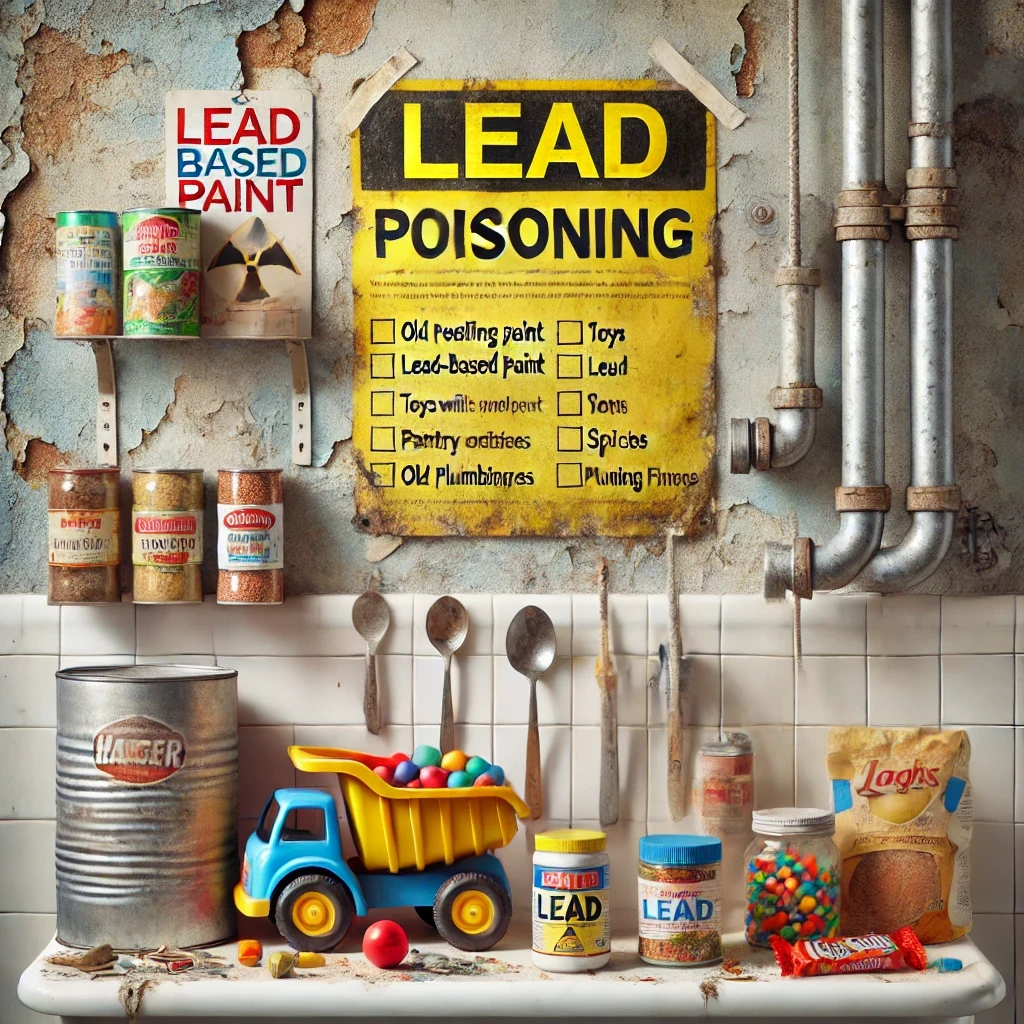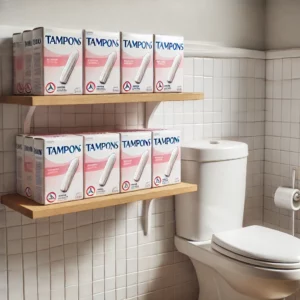Understanding the Broader Risks of Lead Poisoning
Lead poisoning is a severe health risk that extends far beyond the commonly known hazard of lead-based paint. Various everyday items can expose individuals, particularly children, from pantries to toys to harmful lead levels. This article explores the unexpected sources of lead poisoning offers insights into protecting yourself and your loved ones.
5 Key Points
- Lead poisoning can come from multiple sources, not just paint.
- Children are particularly vulnerable to lead exposure.
- Everyday household items, including toys and pantry items, can contain lead.
- Regular testing and vigilance can help prevent lead poisoning.
- Educating the public on hidden lead sources is crucial for prevention.
Hidden Sources of Lead Exposure
Lead exposure isn’t limited to peeling paint in old homes. It can also be found in unexpected places, such as:
- Toys: Many toys, especially older or imported ones, can contain lead in their paint or plastic components. Regular recalls highlight this persistent issue. Parents should be vigilant about the origin and safety certifications of the toys their children play with. It is essential to stay updated with recall notices and consider purchasing toys from reputable brands known for strict safety standards.
- Pantry Items: Certain spices and foods have been found to contain lead. For example, imported spices and candies from specific regions might have higher lead levels due to contamination during processing. Studies have shown that some popular spices like turmeric can be adulterated with lead to enhance color. Consumers should be cautious and opt for brands that test their products for heavy metals.
- Plumbing Fixtures: Lead pipes and fixtures can leach lead into drinking water, posing a significant health risk, especially in older homes with outdated plumbing. This issue came to national attention with the water crisis in Flint, Michigan, where lead contamination affected thousands. Regular testing of tap water and using certified filters can mitigate this risk.
- Cosmetics and Jewelry: Some cosmetic products and inexpensive jewelry may contain lead, particularly items aimed at children. The glittery makeup sets and colorful jewelry that appeal to children can sometimes be dangerous. It’s essential to check these products’ ingredients and safety certifications to ensure they are lead-free.
- Soil and Dust: Lead particles can settle in soil and household dust, particularly near areas with heavy traffic or industrial activity. Contaminated soil can also be found in urban gardens and playgrounds near busy roads, posing a risk to children playing outdoors. Testing the soil in such areas and taking preventive measures like using raised garden beds can reduce exposure.
Health Effects of Lead Poisoning
Lead poisoning can have devastating effects on health, particularly for children. Lead interferes with brain development, leading to cognitive impairments, behavioral issues, and reduced academic performance. In adults, chronic lead exposure can result in high blood pressure, kidney damage, and reproductive problems. Long-term exposure can also increase the risk of neurological disorders and cardiovascular diseases. Early detection and intervention are crucial to mitigate these health impacts.
Preventative Measures and Testing
Preventing lead poisoning requires proactive measures, including:
- Testing for Lead: Regularly test household items, water, and soil for lead contamination. Home testing kits are available, or professional services can provide comprehensive assessments. It’s advisable to test frequently, especially in homes built before 1978, when lead-based paints were commonly used.
- Awareness and Education: Educate yourself and your community about the sources and risks of lead poisoning. Awareness is a critical first step in prevention. Community workshops and informational campaigns can help spread knowledge about the dangers of lead and the importance of regular testing and safe practices.
- Safe Practices: Use only certified lead-free products, especially for items that children frequently use. Ensure your home and surrounding environment are free from lead hazards. This includes inspecting older homes for peeling paint, using lead-free paint for renovations, and maintaining a clean, dust-free living space.
Public Health and Policy
Addressing lead poisoning requires robust public health initiatives and policies. Governments and health organizations must enforce lead-use regulations, conduct regular inspections, and offer lead poisoning prevention and treatment resources. Policies should include stringent rules on imported goods and mandatory lead testing in schools and daycare centers. Public health campaigns can also raise awareness and educate communities about the risks and prevention of lead poisoning.
Community Efforts and Resources
Communities play a vital role in combating lead poisoning. Local health departments often provide resources and support for lead testing and remediation. Joining or forming community groups focused on lead safety can amplify efforts to reduce exposure and protect public health. Community-driven initiatives, such as neighborhood clean-up drives and educational workshops, can significantly mitigate lead risks.
FAQ
Q: Do you qualify for a personal injury lawsuit?
A: To see if you qualify, click here.
Q: What are the symptoms of lead poisoning in children?
A: Symptoms include developmental delays, irritability, weight loss, fatigue, and abdominal pain. In severe cases, it can lead to seizures and coma.
Q: How can I test my home for lead?
A: You can use home testing kits at hardware stores or hire professionals to conduct comprehensive lead assessments. Regular testing, especially after renovations or repairs, ensures a lead-free environment.
Q: Are certain foods more likely to contain lead?
A: Yes, certain imported spices and candies, particularly from specific regions, may have higher lead levels. Always check for recalls and safety information. Opting for locally produced, tested, and certified food products can reduce the risk of lead exposure from the diet.
Q: Can lead poisoning be treated?
A: Yes, treatment often involves removing the source of lead exposure and may include chelation therapy in severe cases to remove lead from the body. Early intervention and ongoing medical monitoring are crucial for effective treatment and recovery.
Q: What regulations exist to control lead exposure?
A: Various regulations restrict the use of lead in paint, gasoline, plumbing, and children’s products. The Environmental Protection Agency (EPA) and other organizations enforce these standards. Continuous advocacy for stricter regulations and compliance checks is necessary to ensure public safety.
Citations:
American Academy of Pediatrics. (n.d.). Lead Exposure in Children. Retrieved from https://www.aap.org
Centers for Disease Control and Prevention. (2023). Lead. Retrieved from https://www.cdc.gov
Environmental Protection Agency. (n.d.). Lead. Retrieved from https://www.epa.gov/lead
Kehoe, J. (2021, March 6). Lead paint is just the beginning: Poisoning danger lurks in pantry, toys. MSN. Retrieved from https://www.msn.com/en-us/health/other/lead-paint-is-just-the-beginning-poisoning-danger-lurks-in-pantry-toys/ar-BB1qxdbR?ocid=msedgntp&pc=ASTS&cvid=25560ce742074c9da0b945c2b4d81cb6&ei=15







